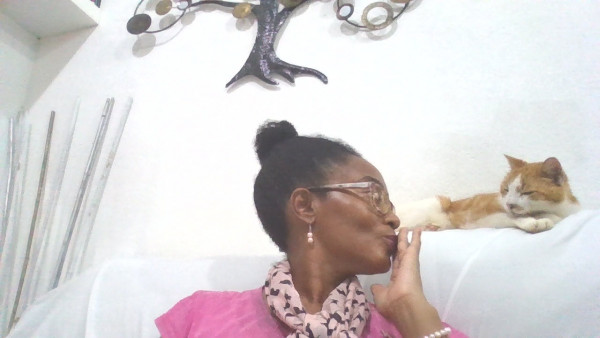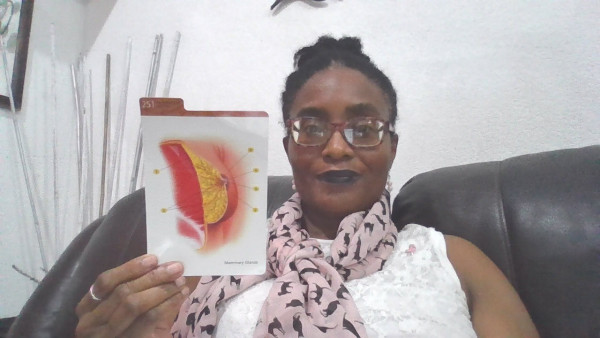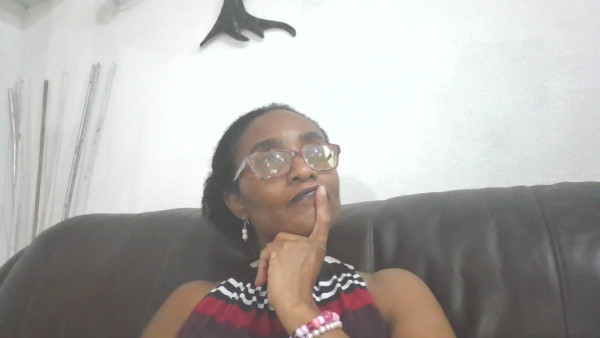How Can You Support a Friend or Relative with Breast Cancer Or Illness? Dos and Don'ts🩷🫂
#breastcancerawareness #breastcancerscreening #pinkribbon #womenshealth #pinktober #breastcancermonth #breastcancernutrition #breastcancer #mindfulnesspractices #healthcheck #breastcancerprevention #toughtimes #truefriends
You want to be the best you can be if your friend or relative has been diagnosed with Breast Cancer or a serious illness.
Yet, sometimes you feel the "flight, fright and freeze" of the best thing to say or do. It is NOT easy, but here are a few guidelines:
DO say:
1/ "I don't know WHAT to say; but I'm here for you" (best said in person if possible as you can add the all important TOUCH)
2/ Do you need me to help with anything? (make sure you can fulfil)- shopping, taking care of pets, babysitting,..
3/ "I am here if you need to talk" - gives them space, no pressure and they know where real help lies especially as time goes on
4/ "I am so sorry this happened to you" (again be cautious- best said in person ; just be yourself, sincerity can be FELT, even over the phone🫂
DON"Ts:
1/ "I know how you feel"-- NO!! You DON' T!!!- it is dismissive and usually does not end well
2/ "You're so brave; you're so strong"- sounds like encouragement, but it also comes across as dismissive and does not give the person the space just to FEEL and deal with their illness - it (usually) DOES NOT HELP
3/ "This was God's plan- maybe He wanted to let you rest (or other)"- WHAT????
No no no please!- the ONE Person they need to rely on is now the SOURCE of the illness? No - God NEVER brings illness. Let hope live.🙏🏽
Whether we know or don't know how to help, just BE THERE for your loved one- it means the world🩷🫂🫂🫂🌻
TO ALL MY SISTER/FRIENDS who are survivors- you're doing this moment by moment!🩷🩷🩷🙏🏽
From my heart to yours 💗
Dr. Lana
SELF Breast Examination A KEY to Early Detection- PINKTOBER special!💗💗💗💗
#breastcancerawareness #breastcancerscreening #pinkribbon #womenshealth #pinktober #breastcancermonth #breastcancernutrition #breastcancer #mindfulnesspractices #healthcheck #breastcancerprevention #breastcancerdiet #elderlyhealth #healthyliving #healthylifestyle #healthyaging #immunesystem
PINKTOBER! 💗💗💗💗💗💗💗
Yes, the incidence of Breast Cancer is STILL on the rise despite the astounding technology for testing , but 5 and 10 year survival rates in a healthy state show promising results.
Early detection saves lives; it's your BEST protection!🩷
Examine your own breasts as well. Research indicates that between 40% to 60% of women who discovered a breast lump that led to early intervention and a high quality of life found the lump ON THEIR OWN EXAMINATION! The answers are literally in your hands!
HERE ARE SOME PRACTICAL GUIDES FOR HOME BREAST EXAMINATION (remember breast tissue develops from the armpit (axilla), so include that always.
WHERE :💗In the shower - examine with arms extended upwards and touch your shoulder (arm relaxed); saves time too!
💗Lying on flat surface with a small pillow
💗After your shower - look for irregular size, shape, any change to overall appearance
.......
WHEN/ WHO: 💗From puberty until periods cease - once a month, a few days after the period
💗Post menopause - once a month - pick a day and STICK to IT!
..........
HOW: 💗Imagine your breasts in quadrants and diligently, gently, in a counter clockwise and clockwise regions with the flat of your hands, gently squeeze the nipple for discharge.
.........
Blood tests for cancer markers, genetic testing and plethora of technology also help with early detection.
💗Have regular health checks - whatever your age- gents, too, please!!
💗Maintain a healthy body - diet and exercise - to reduce your risk and manage any therapy recommended
💗MOST importantly-- a positive mindset- to heal!
TO ALL MY SISTER/FRIENDS who are survivors- stay strong!🩷🩷🩷
PS-#pinkribbon
From my heart to yours 💗
Dr. Lana
............
.Overwhelmed in Family or Professional Caregiving ? Let's connect: 📧lana@lanaannemd.com
local 📧goldenpalmmedicalclinic@gmail.com
If you're a Family Caregiver or Physician at your wit's end, I am here for your free 15-minute coaching call- connect !
We gotta stick together!💯
(Disclaimer: this is not meant to dictate medical information: please seek full advice from your healthcare provider)
#breastcancerawareness #pinktober # pinkribbon #womenshealth #pinktober #breastcancermonth #breastcancernutrition #breastcancer #mindfulnesspractices #healthcheck #breastcancerprevention #breastcancerdiet #elderlyhealth #healthyliving #healthylifestyle #healthyaging #lanaslittlethings #immunesystem #mammogram
It's PINKTOBER! 💗💗💗💗💗💗💗
Still on the rise despite the astounding technology for testing , but 5 and 10 year survival rates in a healthy state show promising results.
Early detection saves lives; it's your BEST protection!🩷
Examine your own breasts as well, as the most common cause for detection is patients who have done their own exam and found a lump- remember breast tissue starts from the armpit (axilla).
Over 30000 persons will be diagnosed with breast cancer in the USA alone- there is a high incidence here in the Caribbean as well.
Guidelines vary , but recommend
- screening early (age 30 ) if there is also a strong family history of cancer- of ANY kind
- MAINLY- ages 50-70 (71 in some countries). In the Caribbean, the suggestion is age 40-/45.
WHY go past 70?- Diseases don't read the books, and while research is scanty- speak with your doctor as you may be at a higher risk- age brings cell changes; new findings occur every year. After this age- it is taken on an individual basis.
Blood tests for cancer markers, genetic testing and plethora of technology also help with early detection.
💗Have regular health checks- whatever your age- gents too please!!
💗Maintain a healthy body- diet and exercise- to reduce your risk and manage any therapy recommended
💗MOST importantly-- a positive mindset- to heal!
TO ALL MY SISTER/FRIENDS who are survivors- stay strong!🩷🩷🩷
PS-#pinkribbon
From my heart to yours 💗
Dr. Lana
(Disclaimer: this is not meant to dictate medical information: please seek full advice from your healthcare provider)







